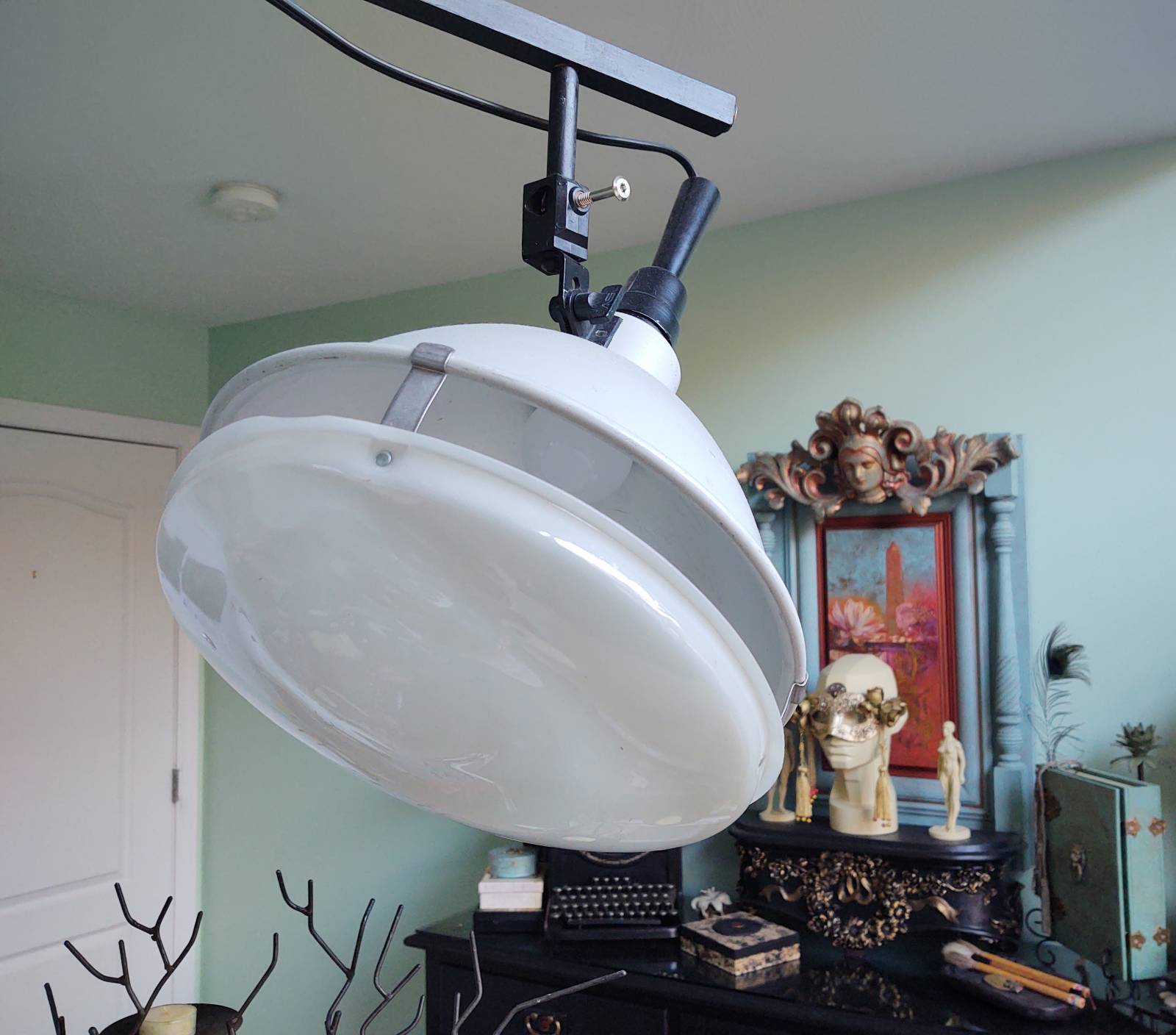
I have employed two photography lamps that are covered with diffusers and placed onto movable arms made of wood and dowels. I can move and angle the lights in any direction.
Painting during the day, when there is plenty of light is an absolute joy. But, during days that are overcast and especially during the night time hours, everything is a completely different situation. Artificial illumination has always been a struggle for artists. I would like to share with you what strategies I have employed in my own studio to deal with lighting.
Artificial illumination has a two-prong problem. One issue at hand is that you need to simulate natural daylight. If you are working on a painting during the day time hours and want to continue into the night, you need to know that your color readings from your eyes are consistent. This relates to mixing as well as judging color on the painting surface itself. The other major problem is to solve the issue of artificial spot lighting and glare. When you use lighting from above in a studio and directionally focus it on your painting, you will get a spotlight effect which will also create glare. These painting conditions are not optimal whatsoever, making it almost impossible to work.
In my studio, my husband and I came up with an interesting alternative to track lighting and typical studio lamps. As shown in the pictures, you will see that I am using two photography lamps that have been placed onto movable arms made of wood and dowels that are screwed to the back of my easel. Each of the wooden arms can move inward and outward so that I can position them at 45°, based upon the size of the painting I am working on. The lamps themselves can also be moved and angled upward and downward as well as side to side. Attached to the lamps with metal clamps are photographic diffusers. These diffusers take the spotlight light effect that comes from the bulbs and alters it through its translucent surface. This diffusing of light creates the most optimal lighting situation for painting with artificial lighting.
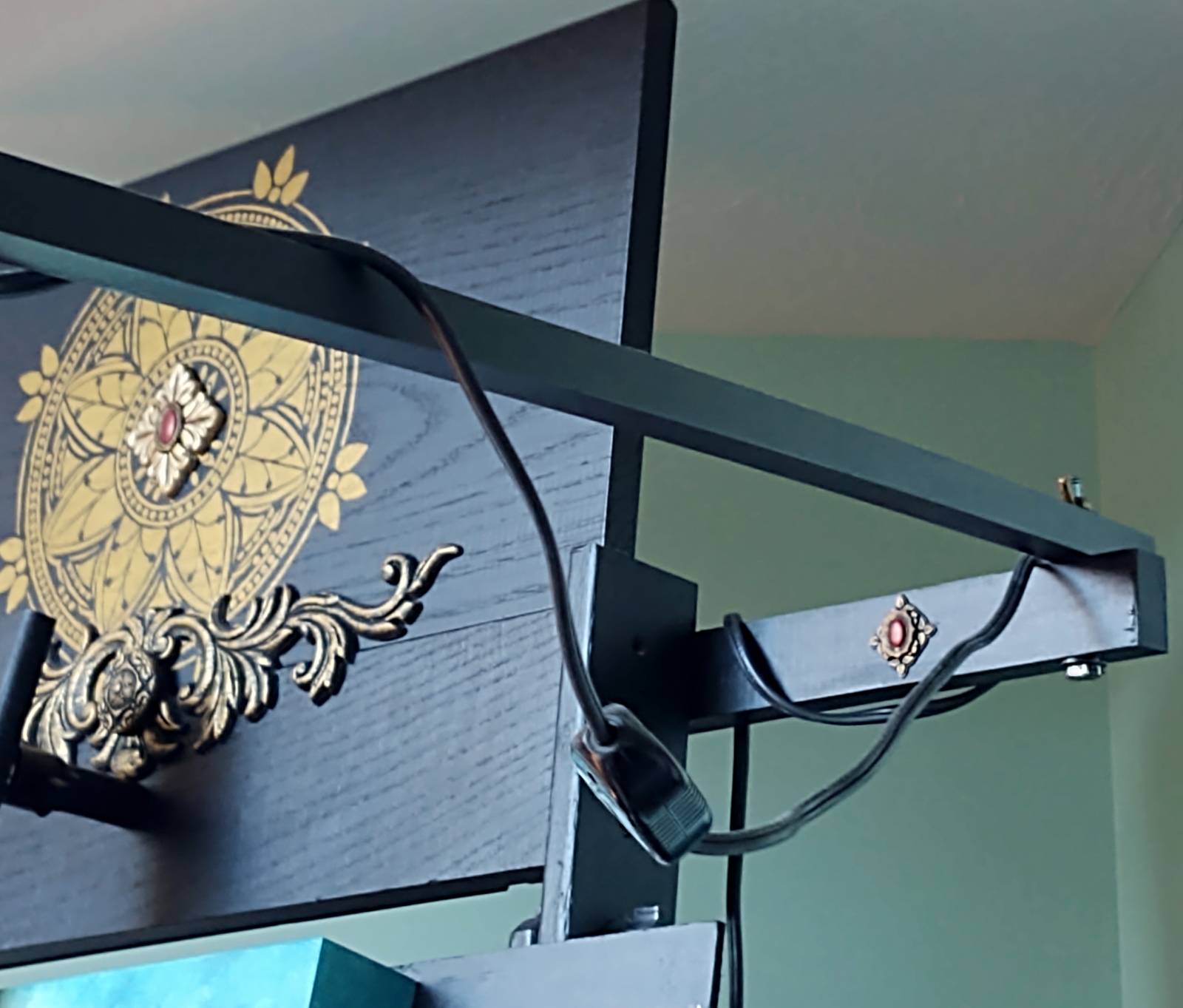
The movable arms are adhered to the back of my easel and can swing both inward and outward with ease.
Since color accuracy is important, you have to make sure you purchase bulbs that simulate natural daylight. This will allow you to maintain consistency between your daytime painting sessions as well as your night. It is also important that you use bulbs that do not heat up, especially if you’re going to use diffusers. Lightbulbs that stay cool over time will ensure that your diffusers, which are mainly made of a plastic, do not melt. I work for many hours painting and this would be an issue if the bulb was a traditional bulb! In the studio, I use Duracell Ultra light bulbs, which are 5000 K. It is a 60W LED bulb that simulates daylight and comes with two bulbs in a package. It is also considered an energy Star bulb.
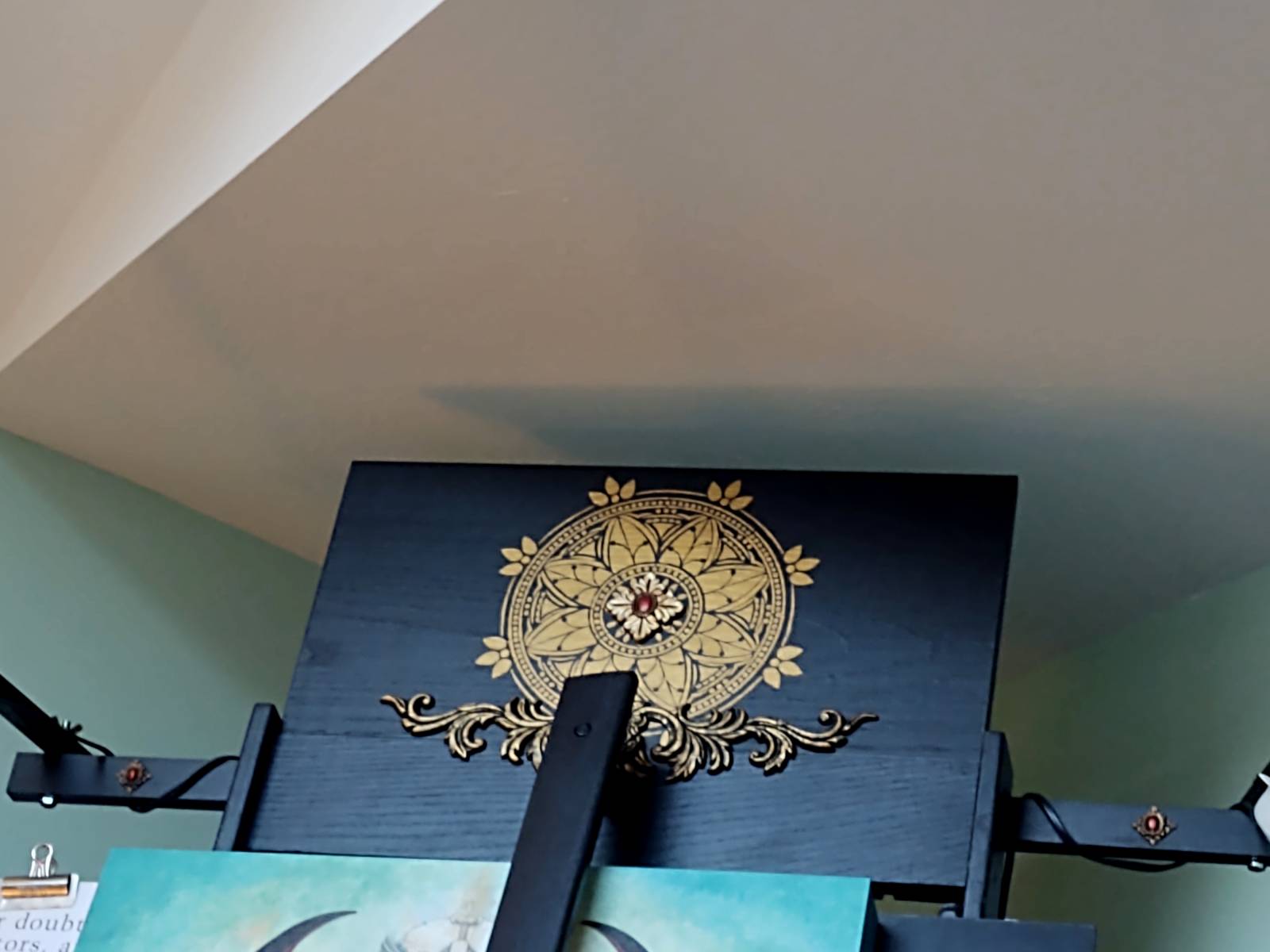
The movable arms are attached to a piece of wood that extends past the width of my easel to accommodate very large paintings. The center piece of beveled wood is my custom mahl stick that can swing in any direction as well as twist.
In addition, I also use light blocking curtains on the windows, allowing me the most control when it comes to creating an even and consistent light situation day or night. My lights are hooked up to an outlet that allows both the lights to come on at the same time when I use a singular light switch as I enter the room. An electrician can set this up for you. Because these are photo lights, they also have their own on and off switches connected to the electrical cords. I have not had a need to use this option.
Whether you are a painter by day or by night, setting up your studio with the appropriate lighting will allow you to work in a color consistent way in any situation. Give it a try!
To see more images of my studio, click HERE!


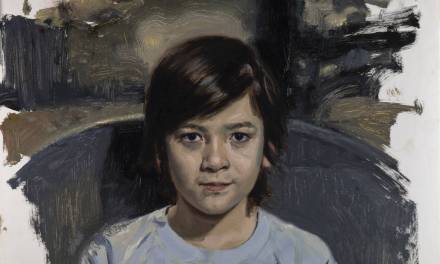
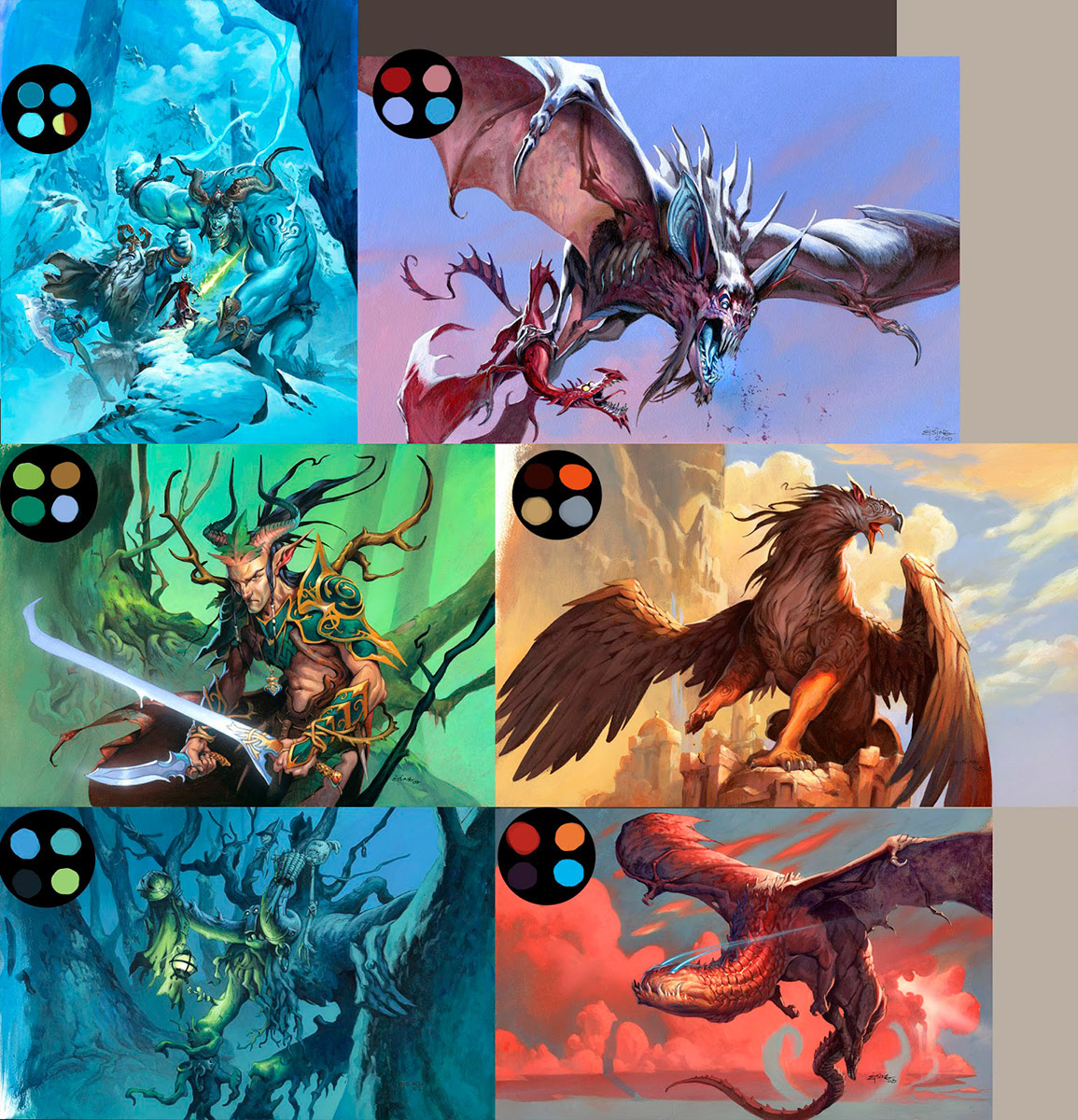

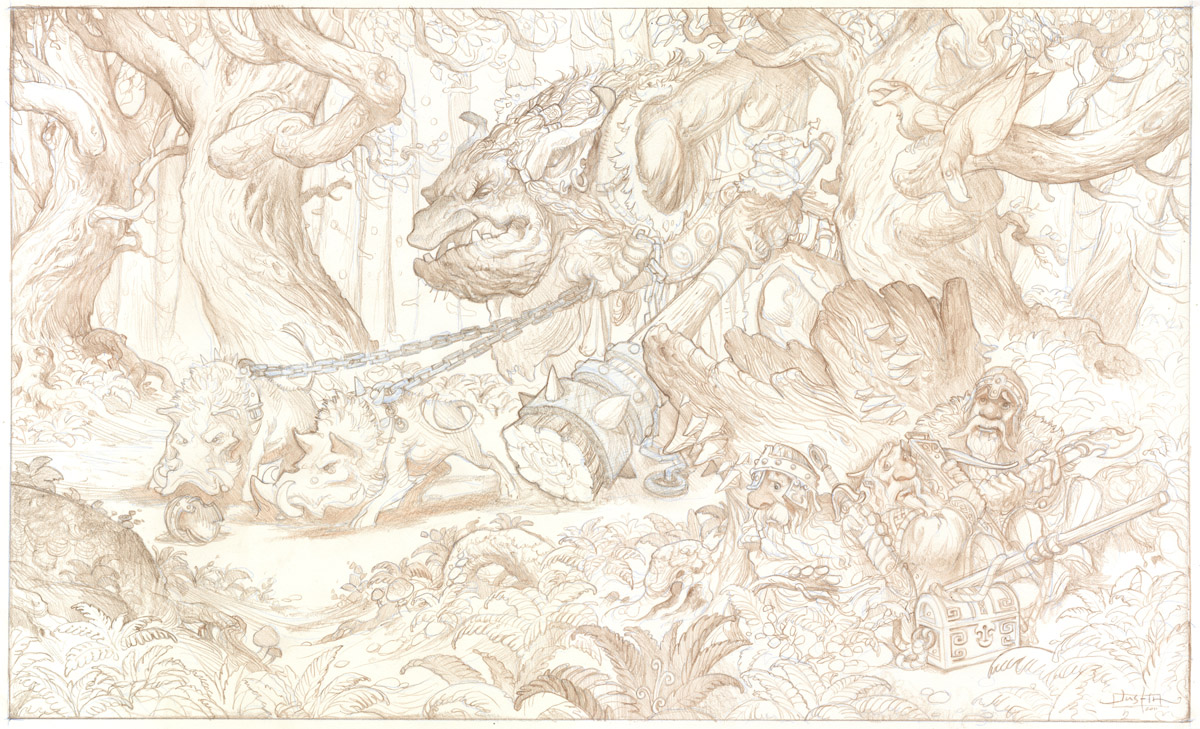

Thanks Lisa! I just installed an overhead 36″ Lithonia Lighting 2-light T8 (flurescent bar) fixture with two Sylvania 25w bulbs at 5000k. I wired a 3-prong plug to the light, and bought a 10-foot 14AWG extension cord and a simple Leviton 15a grounded switch. Tacked the wires in place with little tiny nails. Total cost: $76! I love it – it floods my workspace with nice even light now.
Awesome! Having great light is so important!